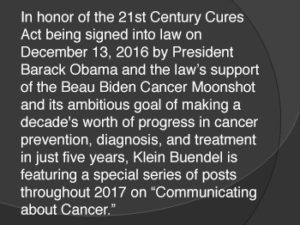Use of AFIX-based Strategies for HPV Vaccination in Florida
Dr. Barbara Walkosz, a Senior Scientist at Klein Buendel (KB), is one of several authors on a recent publication reporting on Florida pediatricians’ use of AFIX-based strategies for human papillomavirus (HPV) vaccination of adolescents and young adults. The report is published in the journal Preventive Medicine. Research collaborators (coauthors) are from the Moffitt Cancer Center and Research Institute, the University of South Florida College of Medicine, Pediatric Partners, the Indiana University School of Medicine, and the Johns Hopkins University School of Public Health.
HPV vaccination is recommended by the U.S. Centers for Disease Control and Prevention (CDC) to significantly reduce the incidence of cervical, vaginal, oral, and other cancers caused by the sexually transmitted virus. A series of vaccinations are recommended for adolescents and young adults, preferably before the onset of sexual activity (9-26 years of age).
However, rates of HPV vaccination in Florida and the U.S. are disappointingly low – less than 50% for girls and less than 40% for boys. In an effort to increase HPV vaccination of pediatric patients, the CDC created and implements the AFIX quality improvement program with healthcare providers. AFIX stands for Assessment, Feedback, Incentives, and the exchange of information – the four key strategies of the program which is delivered to clinics by local health departments.
The Preventive Medicine paper reports on the results of a cross-sectional survey of a representative sample of 770 pediatric and family medicine physicians in Florida to assess the use of the AFIX strategies. Less than half of the physicians surveyed reported implementing any AFIX strategies, leaving room for program engagement, uptake, and improvement.






